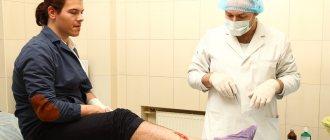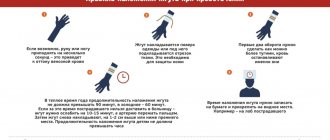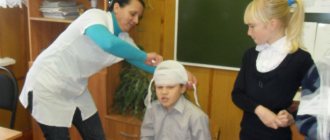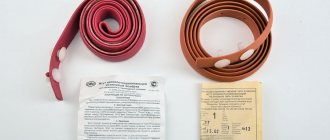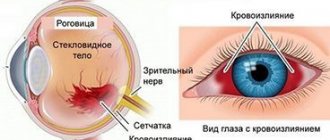Bleeding is a severe traumatic injury. Among all its types, arterial is considered the most dangerous. After all, untimely or incorrectly provided first aid for arterial bleeding can result in unpleasant consequences for the patient, including death.
There is an opinion that only medical workers should have knowledge, as well as practical skills in providing first aid, because this is their direct responsibility. In fact, it is the duty of every person to know and be able to apply basic medical skills in practice. After all, one day it may help save a human life.
In case of arterial bleeding, first aid should be provided immediately. After all, blood is lost at a very high speed, and there is practically no time for thought. In such a situation, a clear algorithm of actions helps, which needs to be worked out until it becomes automatic.
Distinctive signs of arterial bleeding
The classification of bleeding implies its division into three main types:
- arterial,
- venous,
- capillary.
With extensive traumatic injuries, mixed bleeding, for example, venous and arterial, can be observed. In addition, any bleeding, relative to where the blood flows, is divided into internal (in the body cavity) and external (into the external environment). First aid for internal bleeding, as well as its diagnosis itself, is carried out exclusively by medical staff. External bleeding is easier to diagnose and can be treated by anyone.
Arterial bleeding occurs due to damage to the arterial trunks - the vessels that carry oxygenated blood from the cavities of the heart to all tissues of the body. Venous-type bleeding develops when the integrity of the veins that collect blood saturated with carbon dioxide and carry it to the heart is disrupted. Capillary bleeding occurs due to traumatization of capillaries - small vessels that are directly involved in tissue gas exchange.
External differences in types of bleeding
With arterial bleeding, the color of the flowing blood is bright red or scarlet, in contrast to venous bleeding, in which the blood is dark red and comes out slowly. In the case of arterial damage, blood is released rapidly, in a gushing stream. At the same time, the blood stream pulsates, each portion of it comes out synchronously with the pulse and heartbeat. This is due to high pressure in the arterial vessels that come directly from the heart.
In case of arterial bleeding, if help is not provided in time, the phenomena of hemorrhagic shock quickly increase - a pathological condition due to significant blood loss. It has the following symptoms:
- drop in blood pressure;
- increased heart rate;
- pallor and marbling of the skin;
- cyanosis of the extremities;
- respiratory disorders;
- decreased diuresis;
- severe weakness;
- dizziness;
- cold extremities;
- loss of consciousness.
Attention! The faster a person loses blood, the more pronounced the symptoms of shock are, since the body does not have time to compensate for the blood loss.
Bleeding in the veins of the neck
Why is damage to the veins in the neck dangerous?
- Without professional skills, it is impossible to apply a bandage without causing suffocation in the victim;
- vessels in the neck area are large in diameter, their injuries cause profuse and rapid blood loss, so first aid must be provided as quickly as possible;
- Air can be sucked into the lumen of a large vessel, resulting in the formation of an air plug (embolism), which can cause death.
How to stop bleeding if your neck is injured:
- Lay the person down so as to provide easy access to the wound.
- If possible, apply a cotton or gauze cloth folded several times and soaked in antiseptic (hydrogen peroxide) to the wound.
- Press the area above and below the injury with three fingers (ring, middle and index) of both hands folded together.
You can consider that you have achieved results if the bleeding has stopped or greatly weakened, but the pulsation of deep vessels is felt under your fingers.
Nose bleed
First aid
The most important role in emergency care for bleeding of arterial origin is played by the time factor: for maximum effectiveness it should be provided no later than 2-3 minutes from the moment of injury. If it concerns the main arterial trunks, then bleeding from them must be stopped no later than 1-2 minutes after the injury. Otherwise, the chances of a successful outcome will decrease every second with every milliliter of blood lost.
Important! No matter how critical the conditions, before helping others, protect yourself first - put on rubber gloves from your travel first aid kit, and if you don’t have them, minimize contact with blood using available items (for example, cellophane).
The algorithm for stopping any arterial bleeding is as follows:
- Assessing the type of bleeding.
- Finger pressure on an artery that is damaged.
- Applying a tourniquet, applying maximum limb flexion or a pressure bandage.
- Applying an aseptic dressing to the wound.
This sequence of actions may vary slightly depending on the characteristics of the damaged anatomical area.
Methods to stop bleeding can be temporary or permanent. Temporary arrest of arterial bleeding is used at the stage of first premedical and medical care. The final stage is carried out in a hospital and is part of the hospital stage of care. It is worth noting that in some cases, temporary stopping measures are enough to completely stop the bleeding.
Causes of bleeding
The following factors can cause bleeding:
- mechanical damage to blood vessels;
- neoplasm or inflammatory process in the walls of blood vessels;
- deterioration of the integrity of blood vessels due to infection, lack of vitamins or poisoning of the body.
Remember that timely assistance with bleeding can save the victim’s life!
1 Help with bleeding. Types of bleeding
2 Help with bleeding. Types of bleeding
3 Help with bleeding. Types of bleeding
Finger pressure
This technique should be used as a starting one when assisting a wounded person. The basic principles of digital compression depend on the anatomical region in which the artery injury occurred. The general rule is that the vessel should be pressed above the site of injury. But if bleeding occurs in the neck or head area, then the vessels are compressed downward from the wound. This is explained by the fact that the arteries in this area go upward from the heart.
Attention! When using any methods to stop bleeding, you need to lift the affected limb upward to reduce blood flow to it.
Damaged arterial vessels must be pressed against the bony protrusions, as they can slip out, and then bleeding will resume.
Places where arteries are pressed during bleeding
To better remember the method, you can use the 3D mnemonic rule:
- “Press.”
- "Ten".
- "Ten".
It means that you need to press the artery by pressing with ten fingers of both hands for 10 minutes, after which it is recommended to check whether the bleeding has stopped. If it is stopped, and this happens if it is not the main arterial vessel that is damaged, then you can limit yourself to applying a pressure aseptic dressing to the wound.
Since the blood pressure in the arteries is very high, it will take a lot of effort to apply pressure to the vessel and stop the bleeding. Finger pressure is a method of temporarily stopping bleeding, so while one person is pressing the artery, the second should already be looking for a tourniquet and dressing material. There should be no time wasted taking off clothes or freeing limbs. At the same time, one of the eyewitnesses must immediately call an ambulance to provide first aid and transport the victim to a hospital.
The biggest disadvantages of the finger pressing technique are:
- significant pain for the injured person;
- physical fatigue of the person providing emergency assistance.
Speed of execution is considered the most important advantage of temporarily stopping external arterial bleeding using finger pressure.
Bleeding is one of the most common problems that occurs even with minor injuries.
And in theory, everyone seems to know how to provide first aid for bleeding . But when it comes to dealing with real bleeding, panic and tossing begin:
- Is this arterial or venous bleeding?
- Should I apply a tourniquet or a bandage?
- should the tourniquet be applied above or below the wound?
- Should I clean the wound first or later? What to wash with?
- Should I get the glass out of the wound or not?
And while the rescuers are rushing around and doubting, the victim is left without adequate help and continues to lose blood...
The method of stopping bleeding depends 100% on the type of bleeding.
Therefore, the ability to accurately determine the type of bleeding is one of the most important for a rescuer.
You probably know that all bleeding is divided into two main classes: external and internal.
Here we are talking exclusively about first aid for external bleeding, because:
- they are easy to detect, you don’t need to be a doctor
- they happen much more often than internal ones
- almost 100% of external bleeding can be stopped in one way or another by anyone, even without a clear idea of what to do
- the salvation of the victim is highly dependent on whether others can detect and stop life-threatening bleeding right at the scene of the incident
We will not consider first aid for internal bleeding for two reasons:
- internal bleeding is very difficult to diagnose even for a doctor, especially outside a hospital
- even if you somehow diagnosed it, all your first aid for internal bleeding boils down to calling an ambulance and ensuring safety/comfort for the victim while waiting for doctors.
Types of external bleeding
Putting things in order in concepts and definitions
We bet you're expecting to see something like this below:
- First aid for arterial bleeding;
- First aid for venous bleeding;
- First aid for capillary bleeding.
We will disappoint you, this will not happen...
Since this classification, familiar from school, has no practical application in real life, but only brings confusion into the minds of rescuers.
The problem is this...
According to this classification, the logic of first aid looks like this:
- Arterial bleeding - scarlet blood flows out of the wound in a pulsating fountain - to stop it is necessary to apply a tourniquet above the wound ;
- Venous bleeding - dark cherry blood flows out of the wound in a steady stream - to stop, apply a tourniquet below the wound ;
- Capillary bleeding - dark cherry blood slowly flows drop by drop from the wound - to stop, apply a bandage to the wound.
Types of bleeding according to impractical classification
Everything seems logical...
BUT!!!
The problem is that real bleeding very rarely looks as perfect as in the books. Trying to understand what kind of assistance to provide based on the presence/absence of a fountain and the color of the blood leads to errors in diagnosis and errors in providing first aid for bleeding .
The reality is:
- Arterial bleeding does not look like a fountain in most cases.
You can see the fountain, like in a movie, only:
- In case of injury to superficial arteries (wrist, neck),
- in the first seconds after injury, while the blood pressure in the body is still high.
There will be no fountain:
- if the artery is located deep in the muscles (on the thigh, for example), it will be drowned out by the thickness of the muscles and other tissues
- a minute or two after the injury, when blood pressure dropped due to blood loss.
Thus, in many cases, when an artery is injured, you will not see any “picture” fountain. The blood will flow out in an even stream and look like venous bleeding...
This can lead to an error in diagnosis and choosing the wrong type of help.
- Applying a tourniquet below the wound may have no effect or may increase bleeding.
Without seeing the fountain promised to him, the rescuer may mistake arterial bleeding for venous and, following the recommendations, apply a venous tourniquet below the wound. This will lead to a very unexpected and dangerous effect - instead of stopping, the bleeding continues with the same force! That is, with our correct actions we worsen the condition of the victim. Isn't that great?
- How to distinguish scarlet blood from cherry blood?
To do this, you must have adequate lighting and very extensive experience in observing purely arterial and purely venous bleeding. If you see bleeding for the first time, you will never be able to understand from the color of the blood which vessel it is coming from. For you it will just be red. And if the lighting is not very good (twilight, artificial lighting), then you can completely forget about color differentiation.
Trying to determine the color of the blood in order to understand whether to apply a tourniquet above or below the wound will only lead to loss of time, and therefore to loss of blood to the victim.
- What if both an artery and a vein are damaged (an ax blow to the shin)???
What color should the blood be: scarlet or cherry? Or medium red? So what's now?
Apply the tourniquet from below or from above? Or two at once just in case???
In general, a dead end...
- The temporal artery on the head is bleeding, a clear fountain is visible.
According to the rule, this is arterial bleeding and a tourniquet must be applied above the wound.
Where we will put it:
- higher, on a skull with a hairstyle?
- or below the wound, that is, on the neck???
Okay, I think there are enough arguments and I was able to show the most severe inconsistencies in this approach.
I hope that I have convinced you of its impracticality.
The global medical community, including our Russian one, not only offers, but also widely uses in practice a completely different approach.
It is based not on the type of damaged vessel, but on the intensity of bleeding - the amount of blood that the victim loses per unit of time.
According to this approach, all external bleeding, regardless of the type of vessel, is divided into two types:
- Heavy bleeding
- Light bleeding
Severe bleeding by nature can be arterial, venous, or mixed.
But first aid for bleeding is absolutely the same in any case!!! Either a pressure bandage directly on the wound, or a tourniquet and its analogues above the wound.
A tourniquet is never applied below the wound for any type of injury.
Light bleeding can be either venous or capillary.
But the help is also the same and does not depend on the type of damaged vessel.
How to distinguish heavy bleeding from weak bleeding and how to provide first aid to a bleeding victim - read below in the relevant sections.
For now, just remember that in a real situation there are no arterial, venous or capillary bleedings for you, there are strong and weak ones, and your actions will depend only on this.
Stop bleeding
Procedure at the scene of the incident
Actually, fighting bleeding is by no means the first of the manipulations that you, as a rescuer, need to perform at the scene of an incident.
By being “stuck” on solving problems with blood, you may miss other things that are no less important for the survival of the victim and thereby reduce the chances of success of your actions . Therefore, we will start from the very beginning and analyze the situation from the moment the problem arose.
You find an adult or child with traces of blood on or near him...
Regardless of whether he is conscious (screaming, crying, calling for help) or not (lying quietly and motionless), we act strictly according to the algorithm for providing first aid for bleeding .
So, let's follow the algorithm.
- Step 1
Stop! IS THERE A DANGER?
Stop where you are, do not rush towards the victim!
Assess the scene of the incident for any danger to yourself.
This will take no more than 3 seconds, but it may save your life and you will be able to help the victim.
The danger may be:
- a dog that bit the victim. She might bite you too.
- working power tool (saw, grinder, etc.)
- pieces of broken window glass and mirrors that have not yet fallen
- traffic
- drunk neighbor with a knife, etc.
If you ignore this step and rush to the bloody person without hesitation, you may not notice the danger and become a victim yourself.
And then you will no longer save anyone. You will have to be rescued.
If there is a danger , then forget about bleeding and first do one of two things:
- eliminate the danger (drive away the dog, turn off the tool, etc.);
- evacuate the victim to a safe place.
If there is no danger , then approach the victim and...
- Step 2
Find the source of bleeding (wound) and determine its type:
- strong
- weak
It's very simple and can be done by eye.
If blood comes out of the wound in drops , this is weak bleeding.
If the blood flows in a continuous stream , stream, stream, or pulsates like a fountain, this is severe bleeding.
In general, everything that does not drip, but pours and flows is strong.
Attention, dangerous trap!!!
Don't pay attention to the size and appearance of the wound, just look at the intensity of the bleeding!
The size and shape of the wound can mislead you and you will start making mistakes. The wound can be huge, torn, scary (face bitten by a dog), BUT the bleeding from it is weak.
And vice versa - the wound may be small and not terrible (a cut near the ankle), but blood pours out of it like a bucket.
A large laceration on the face looks terrible and purely emotionally attracts our attention; we want to start doing something to make it not so scary. A small wound on the leg looks trivial, so we forget about it.
As a result, we throw all our resources into fighting a problem that is not life-threatening and forget about a problem that can very quickly lead to serious deterioration and death.
DO NOT fall for this trap!!!
Look at the bleeding and its intensity, not the size and appearance of the wound
Provide first aid for bleeding according to its type
Light bleeding
Does not threaten life and does not require an emergency stop. Even if you don’t provide any help, it will stop on its own within 10 minutes due to the natural formation of blood clots in the wound.
Therefore, instead of stopping bleeding, the fight against infection in the wound comes to the fore.
To prevent possible suppuration and other complications:
- We wash the wound to remove blood clots, dirt and small foreign bodies;
- disinfect inside and around the wound;
- cover with a bandage.
All.
If the wound looks scary, we routinely contact a surgeon for medical help.
Heavy bleeding
This is a direct threat to life and requires an immediate stop!
Otherwise, blood loss will increase every second, and the victim may die.
Attention!
We do not treat a wound with heavy bleeding!!!
Before stopping heavy bleeding, do not waste time on disinfection and washing the wound!!!
While you wash the wound, the victim continues to lose blood.
Doctors at the hospital will clean the wound. You still have to go there.
Your task is to stop the bleeding and give the person a chance to live until this hospital.
Just stop the bleeding.
Stopping severe bleeding
Heavy bleeding can occur only in five parts of our body where there are large vessels:
- Two arms
- two legs
- neck
The head and torso practically do not cause severe external bleeding.
A wound on the head or torso can look very impressive and scary.
But there will not be severe bleeding, since there are simply physically no large superficial vessels on the head and torso, damage to which can lead to severe bleeding.
Heavy bleeding is stopped in two stages.
1. Instant stop with your hands.
First aid for severe bleeding MUST begin with this step
- Instantly stops bleeding and blood loss;
- Does not require a first aid kit or improvised means of assistance;
- Allows rescuers to calmly, without fuss (blood is no longer flowing) to find a first aid kit/available means and also calmly perform a final stop of bleeding with a pressure bandage or tourniquet.
Attention!
If you don’t have a first aid kit and it’s impossible to apply a bandage or tourniquet, you can control the bleeding manually until the doctors arrive. This is fine.
- Applying a pressure bandage or tourniquet (or its analogues).
This is the final solution to the problem, after which you can safely transfer the victim to doctors for surgical treatment.
For this step, you need to have a first aid kit (the best option) or at least some available means (the worst option of the best)
Instantly stop severe bleeding with your hands
There are two techniques for instantly stopping bleeding:
- Hold the bleeding wound with the heel of your palm and lift the limb high, provided that the limb is not broken.
- Compress the main artery in the limb with your fist or knee above the wound.
Compressing the wound with your palm is a quick and reliable method of controlling bleeding. Stopping the bleeding takes a few seconds.
But, unfortunately, its use is very limited.
Restrictions:
- Unavoidable direct contact with someone else's blood
If the victim is your relative, and you are sure that he does not have AIDS, hepatitis A, B, C or Delta, then this is not a problem. Contact with someone else's blood does not cause infection.
But if you do not know the victim... Then using this technique is always potentially risky and is not preferable.
- Nature of injury makes pressure on the wound impossible:
- the wound is very large and you cannot cover it completely with your palm
there are several wounds, and you cannot compress them all at once
- there is a foreign object in the wound and direct pressure is not possible
- a bone sticks out of the wound as a result of an open fracture, pressing is useless and very painful
- the bleeding is caused by the amputation of a limb, there is nothing to put pressure on
In these cases, first aid for a bleeding victim is that instead of squeezing the wound, one must use the technique of clamping the artery that supplies the entire limb.
Compressing an artery with a fist or knee
Bleeding from extremities
This method is guaranteed to work in 100% of cases and allows you to avoid direct contact with the victim’s blood.
The artery is clamped above the wound, on the inner surface of the limb:
- on the arm - on the inner surface of the shoulder as close to the armpit as possible
- on the leg - on the inner thigh as close to the groin as possible
In these places it is easiest to compress the artery.
Your fist is guaranteed to press the only artery to the only bone, and the flow of blood to the wound will stop.
If the pressure from your fist is not enough or you need to free both hands to handle the first aid kit, you can replace your fist with your knee. This is guaranteed to stop the bleeding.
This instantly stops bleeding on the arms and legs.
On the neck this is done a little differently.
Bleeding from the neck
The most severe and dangerous bleeding from the neck occurs when the carotid arteries are damaged. They are located in front on either side of the larynx and trachea.
Complete dissection of even one carotid artery leads to the death of the victim within 30 seconds. Seconds! Not minutes.
If the dissection is not complete, then the time until complete death is a little longer, but still very short. Therefore, we must act with lightning speed.
Bleeding from other parts of the neck is not so dangerous and is stopped in the same way as on the extremities - by direct pressure on the wound.
Example. A cut on the side of the neck, a dissection of the jugular vein. We press the heel of the palm on the wound - and that’s it.
In the area of the carotid arteries, you need to act differently:
Place the tips of all your fingers vertically on the victim’s throat below the level of the wound and move them to the side of the wound. Moving to the side, your fingers will unmistakably fall into the groove between the throat and neck muscles. In this depression, at its very “bottom,” lies the carotid artery. Press firmly with your fingers into the location you find, and you are guaranteed to pinch the damaged vessel. It’s very easy to understand that you did everything correctly - the blood will instantly stop flowing.
Instead of a resume
So, we instantly stopped the heavy bleeding with our hands. Or a knee.
Blood no longer flows from the victim, and we can calmly, without fuss, apply a pressure bandage or tourniquet with its analogues to finally solve the problem.
But before we move on to talking about bandages and tourniquets, let’s look at two important questions that are asked at every training.
Popular questions
- How long to compress the bleeding manually?
It's simple. Hold with your hands until you apply a pressure bandage or tourniquet. If applying a bandage or tourniquet is for some reason impossible or does not produce results, hold it with your hands until the doctors arrive. This is a normal working option. Remember - as soon as you remove your hands or knee, the bleeding will immediately resume.
- Why even squeeze the bleeding with your hands if you can immediately apply a tourniquet?
The point is that in a real situation you cannot apply a tourniquet IMMEDIATELY... You simply don’t have it with you in most cases!!! You have to run after him somewhere, but the blood is flowing...
Hands, unlike a tourniquet, are always there! And squeezing the blood with them is a matter of a few seconds!
And searching for a first aid kit with a tourniquet or inventing one from improvised means takes long minutes. Minutes during which blood will continue to flow from the victim.
Agree that this is absurd! You are already next to the victim, blood is still flowing from him, and you are busy searching and inventing.
Never do this!!! First aid for bleeding is to immediately stop the blood with your hands, and while the bleeding has stopped, get a first aid kit, remove belts, tear T-shirts and whatever else.
Completely stops heavy bleeding.
Pressure bandage or tourniquet, tourniquet, twist?
A pressure bandage and a tourniquet (tourniquet, twist) are two fundamentally different techniques for stopping severe bleeding.
Both have their pros and cons and associated application preferences. It is important to know them in order to understand when to use what.
Pressure bandage
Pressure dressing is the number one technique for permanently stopping severe bleeding, according to the latest medical standards.
The essence of the method
Pressure bandage:
- applied directly to the wound
- blocks only the damaged vessel, without affecting healthy ones.
Thus, it stops bleeding without disrupting the blood supply to the entire limb.
It is the second property that makes the pressure bandage the number one technique, providing it with its main advantages. pros
- It is very effective - it stops up to 90% of severe bleeding, including fountains from the arteries.
- It does not disrupt the blood supply to the entire limb and therefore
- does not give dangerous complications associated with pressure on body tissues and their bleeding
- has no restrictions on the time of application (can be applied for a long period of time, up to a day).
- Can be applied to the neck without suffocating the victim
Minuses
Not applicable, as it will not have any effect if severe bleeding is caused by the following reasons (about 10% of all cases of severe bleeding):
- the wound is very large, it cannot be covered with a pressure bandage;
- multiple wounds (applying several bandages at once is not realistic);
- foreign body in the wound (glass, metal, etc., the pressure on the wound is absurd);
- a bone protrudes from the wound (an open fracture, the pressure on the wound is absurd);
- amputation of a limb (there is nothing to put pressure on).
In these situations, a pressure bandage will not work and you must immediately apply a tourniquet or its analogues.
Tourniquet and its relatives - tourniquet, twist.
All of them are the number two remedy for stopping severe bleeding.
They are used only in desperate situations when a pressure bandage cannot be applied in principle (see list above).
The essence of the method
All of these devices differ fundamentally from a pressure bandage in that:
- applied to the limb above the wound (where there is only one bone - the shoulder or thigh, to ensure that the only artery is pressed against the only bone)
- compresses all vessels in the limbs: both damaged and healthy. And along with them are nerves and other soft tissues, which often leads to serious side effects and complications (see below).
- pros
Their clear and only advantage is their high efficiency - they stop almost 100% of severe bleeding from the extremities.
Minuses
The disadvantages are related to the fact that all these devices completely block the blood supply to the limb and strongly compress the soft tissue at the site of application.
- Cause a number of complications, even if applied correctly:
- nerve damage, sometimes irreversible (paralysis, cuts);
- damage to tendons and muscles.
Mistakes made during application can lead to even more serious consequences, including the loss of a limb.
- The application time is limited to 30 minutes, regardless of the time of year and other factors, according to modern medical standards.
Exceeding this time increases the risk of local complications.
- Not applicable for severe bleeding from the neck.
Yes, a tourniquet is not applied to the neck. Don't be embarrassed that a bunch of articles and pictures on the Internet tell you otherwise.
Practical conclusion from the above
After temporarily stopping heavy bleeding with your hands (fist, knee), always try to stop it permanently using a pressure bandage.
Use the tourniquet and its analogues only if:
- applying a pressure bandage is basically impossible due to the nature of the wound
- for some reason the bandage did not give results
Instead of a conclusion
Let's summarize the most important information from this article.
Having found a person in the blood, follow the algorithm:
- Stop!!! Make sure of your own safety or ensure it.
- Locate the wound and assess bleeding:
Forget about: arterial, venous and capillary!
Bleeding will either:
- Strong – pours in a trickle, stream or fountain
- Weak - dripping from the wound
- Provide assistance according to the type of bleeding
A. Severe bleeding - stop the bleeding quickly, call an ambulance
- instantly with your hands or knee
- then apply a pressure bandage or tourniquet (its analogues), if you have a first aid kit and the skill to use its contents
B. Light bleeding
- wash the wound
- disinfect
- apply a bandage
That's all you need to know to provide adequate first aid for bleeding.
Maximum fixed limb flexion
In some cases, you can use maximum flexion of the limbs as a method of temporarily stopping bleeding from the artery. It should be performed after making sure that the victim does not have a fracture of the injured limb.
A thick pad should be placed at the bend of the limb (popliteal, elbow and groin areas) to compress the damaged artery at maximum flexion
After inserting the roller, the bent arm or leg is fixed to the patient’s body. Such actions are aimed at temporarily stopping bleeding, and if they are ineffective, one should prepare to apply an arterial tourniquet. This same technique, even when performed correctly, has questionable effectiveness.
Extensive wounds
In this case, the rules for stopping arterial bleeding are somewhat different. The best method, available in any conditions, is to clamp the vessel slightly above the wound (a place located along the bloodstream closer to the heart). However, it is necessary to know exactly in which area the damaged artery is closest to the surface. This is where the vessel should be pressed against the bone.
Such an area can be identified by its characteristic pulsation. Once the point is found, it should be pressed down firmly. For such purposes, one finger is not enough. Clamping occurs with the entire palm or even a fist. If everything is done correctly, arterial bleeding stops immediately.
- Providing first aid for bleeding
However, it is very difficult to clamp the artery for even 15 minutes. And when transporting the victim, this may become impossible. Therefore, the above method is temporary. It makes it possible to treat the wound and prepare the necessary material to stop bleeding in other ways.
Applying a tourniquet for arterial bleeding
Stopping bleeding from an artery by applying a tourniquet is a temporary method of stopping bleeding. The task of everyone who helps the victim is to correctly perform the technique of applying a tourniquet and ensure the delivery of the wounded person to a medical facility.
A tourniquet should be applied only in case of severe arterial bleeding. In all other cases, you should try to stop the bleeding with digital compression or a pressure bandage. A pressure bandage is made in case of arterial bleeding from a whole roll of sterile bandage, which is tightly fixed to the wound surface.
If the rules for applying a tourniquet are violated, sad consequences may occur: necrosis, gangrene, damage to nerve trunks
This is especially true for the shoulder region, because the radial nerve is located superficially there. A tourniquet is applied to the middle third of the shoulder only as a last resort. It is better to choose a place higher or lower. One of the available means can be used as a tourniquet: a wide rope, a belt or a scarf.
Attention! A homemade tourniquet should not be too thin, as this can cause tissue necrosis.
So how to apply a tourniquet during arterial bleeding so as not to harm the patient in the future? By remembering a few basic rules, you can avoid a lot of mistakes.
The algorithm for applying a tourniquet is as follows:
- Select a place to apply the tourniquet. It is located above the site of damage, but as close as possible to it (the optimal distance is 2-3 cm). We should not forget about injuries to the neck and head - there a tourniquet is used below the wound. If the femoral artery is damaged, it is compressed at the level of the middle third of the thigh, and if there is bleeding from the arm, it is compressed in the upper or lower third of the shoulder.
- Wrap the selected area with cloth, gauze or bandage.
- The limb should be in an elevated position.
- The tourniquet is stretched and made several turns around the limb. In this case, its first turn is made with greater, and all subsequent turns with less effort. If large arterial trunks are damaged, for example, the femoral artery, it makes sense to apply two tourniquets - one higher, the other lower.
- Its ends are tied into a knot or secured with a special chain or hook.
- The correct application of the tourniquet is checked: pulsation of the injured artery below the injury is not palpable, and bleeding from the wound stops.
- The exact time of application of the tourniquet is recorded. This can be done on a piece of paper, which is inserted under the tourniquet itself, directly on the patient’s body near the site of injury, or on clothing.
- An aseptic bandage is applied to the wound.
In case of injuries to the carotid artery, the tourniquet is applied below the injury, but it should not compress the artery of the same name on the other side. To do this, a tight roller is applied on the side of the injury, and a tourniquet is fixed on the opposite side through the patient’s raised arm and an attached flat board.
Correct application of a tourniquet according to Mikulicz for injury to the carotid artery
The tourniquet should not be applied too tightly, since applying the tourniquet correctly means applying minimal pressure to stop the bleeding. In this case, the blood supply should be carried out through deep arteries and veins, and in no case should it stop completely.
If the tourniquet is applied too tightly, it can lead to necrosis of the limb, followed by amputation.
The time factor is also important here. The maximum time for applying a tourniquet varies depending on the ambient temperature:
- in summer - for 1 hour;
- in winter - for 30 minutes.
If a longer time interval is required to transport the victim to the nearest hospital, the tourniquet is temporarily removed, switching to 10 minutes of finger pressure. Then you need to apply a tourniquet again according to the rules described above.
Types of venous bleeding and general manifestations
The division of venous bleeding into several types is associated with the characteristics of their occurrence, different dangers and treatment tactics. It is important to remember that the following may be damaged:
- Superficial veins of the upper and lower extremities;
- Deep veins;
- Veins of the neck and head.
Each of these bleedings carries a different danger to life. The most important criteria that suggest a vein is damaged may be the following symptoms:
- The presence of wounds of any type (stab, cut, gunshot, shrapnel, etc.) in the places where veins are located and run;
- Blood flows out in a constant rapid stream without interruption;
- The blood is dark red in color;
- Preferential outflow of blood from the peripheral end of the damaged vessel;
- Percutaneous compression of the vein near the wound reduces the rate of blood loss.
The causes of injury are most often associated with stab wounds, gunshot wounds and suicide attempts.
How to competently provide first aid for severe capillary bleeding?
First aid for capillary bleeding involves applying a tourniquet. The indication is extensive damage, impaired coagulation. Rules for applying a tourniquet:
- Wrap the tourniquet 2 times around the injured limb above the wound. Correct actions lead to the fact that the pulse under the wound will not be palpable.
- Place a piece of fabric under the tourniquet to avoid trophic changes.
- Be sure to record the exact time of application of the tourniquet. The skin condition is monitored.
- In the warm season, you can leave the tourniquet on the body for up to 2 hours, in winter - no more than 1 hour. Every 30 minutes you need to relax the rubber band for 30 seconds to avoid tissue death. If everything is done correctly, the limb does not turn blue or swell. And vice versa.
After applying a rubber tourniquet, the victim is quickly sent to the hospital for diagnosis and treatment. If you don’t have a rubber band at hand, use a belt, scarf, or tie.
